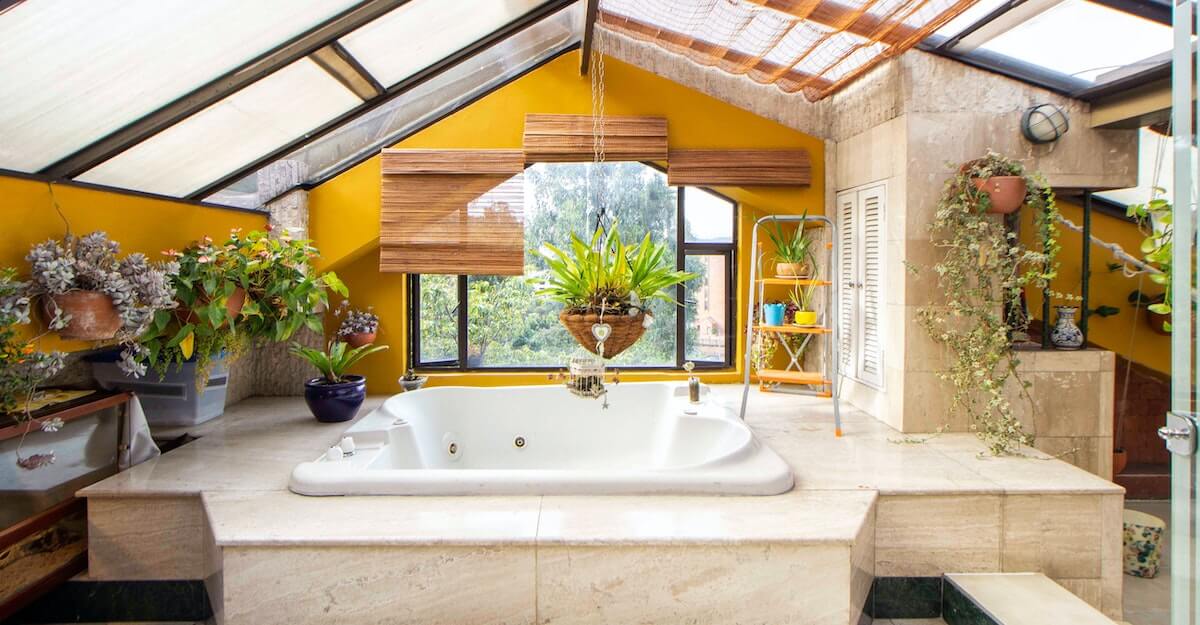Making your bathroom eco-friendly is an easy and rewarding decision. Not only does it help protect the environment, but it also improves your overall wellbeing. With the world becoming more and more concerned about sustainability, it’s become more important than ever to adopt eco-friendly habits in all aspects of our lives. In this step-by-step guide, we’ll show you how to make your bathroom a haven of sustainability and style. Whether you’re looking for eco-friendly materials to choose, or want to incorporate water and energy conservation into your bathroom design, we’ve got you covered. We’ll give you all the inspiration you need, plus practical tips to help you create a bathroom that reflects your values.
1 . Sustainable Materials for Bathroom Decor
If you’re looking to make your bathroom more eco-friendly, one of the first things you’ll need to do is choose the materials you use for decor. Make sure you go for materials that are both natural and renewable, and that have a low impact on the environment. Bamboo is a great option for your bathroom – it grows quickly and is really durable. Cork is harvested from cork trees, so you don’t have to buy new timber for your bathroom floors and walls. And if you want to add some character and charm to your bathroom, you can use reclaimed wood, recycled glass, and other eco-friendly materials. For example, you can use recycled glass for countertops and tiles, as well as decorative accents.
2 . Water-Saving Fixtures and Strategies
If you’re looking to make your bathroom more eco-friendly, water conservation is a great place to start. Installing some water-saving fixtures in your bathroom can help you save a lot of water without sacrificing functionality. Low-flow showerheads are a great way to save water, as well as aerated and dual-flush faucets that let you flush both liquid and solid waste at the same time. If you have a leak, fix it right away – even a small one can waste a ton of water. And don’t forget to add some water-saving habits to your bathroom routine too – like taking shorter showers and turning off the tap when brushing your teeth. And if you have a bucket or basin, you can also use it to collect water for your plants.
3. Energy-Efficient Lighting and Appliances
Maintaining energy efficiency in the bathroom can not only be beneficial to the environment, but it can also help to reduce utility bills. Consider using LED lighting, which uses less energy and has a longer life span than conventional incandescent light bulbs. Additionally, consider installing motion sensors or timer systems to automatically shut off lights when they are not needed. Additionally, consider using energy-saving appliances such as low-power hand dryers or water heaters that have timers or are tankless. These small modifications can have a significant impact on energy savings and the sustainability of the bathroom environment.
4. Eco-Friendly Cleaning Products
Keeping your bathroom clean and hygienic is important, but it’s just as important to use eco-friendly cleaning solutions. Many traditional cleaning products contain toxic chemicals that can be harmful to your health and the planet. Look for eco-friendly solutions that are bio-degradable, non toxic, and free of harsh chemicals. You can also create your own cleaning solutions by making your own vinegar bath bombs, baking soda bath bombs, and lemon juice bath bombs. These natural solutions are easy to use, safe, and easy to find, making them perfect options for your sustainable bathroom cleaning regimen.
5. Water Recycling and Greywater Systems
If you have a bathroom, you can cut down on water wastage by installing water recycling and a greywater system. Greywater is water that’s been used a few times, like when you flush the toilet or water your garden. If you install a greywater system, you can reuse that water, so you don’t use as much freshwater. Talk to a pro to figure out if a greywater system is right for your home, and make sure it follows local rules and regulations.
6. Recycling and Waste Management
Recycling and waste management in bathrooms should be implemented in a systematic manner. It is recommended to set up separate bins for items such as plastic bottles and paper packaging, as well as cardboard. Toiletries should be stored in reusable containers, rather than disposable plastic bottles. Organic waste should be composted, for example, cotton swabs or toilet paper rolls. A small compost bin should be used to compost organic waste. Additionally, it is recommended to explore the possibility of recycling or reusing old bathroom fittings or materials.
7. Indoor Plants
Indoor plants are a great way to improve the air quality in your bathroom and create a peaceful atmosphere. They are known to thrive in humid conditions and help to remove toxins from your air. Aloe vera is a great indoor plant for your bathroom, as well as spider plants, peace lilies, and more. Choose plants that require little to no maintenance and can withstand low light. Not only do indoor plants add beauty to your bathroom, but they also help to improve your overall health.
Conclusion
Making your bathroom eco-friendly is not only good for the planet, but it’s also a great way to add some style and function to your home. By choosing eco-friendly materials, using water and energy-efficient cleaners, and exploring eco-friendly recycling, you can turn your bathroom into a green oasis. Don’t forget, every little bit helps, and by making eco-friendly choices in your bathroom, you’re helping to make a difference. Check out our ultimate guide to making your bathroom more eco-friendly, and help inspire others to do the same. Let’s make the world a greener place!



